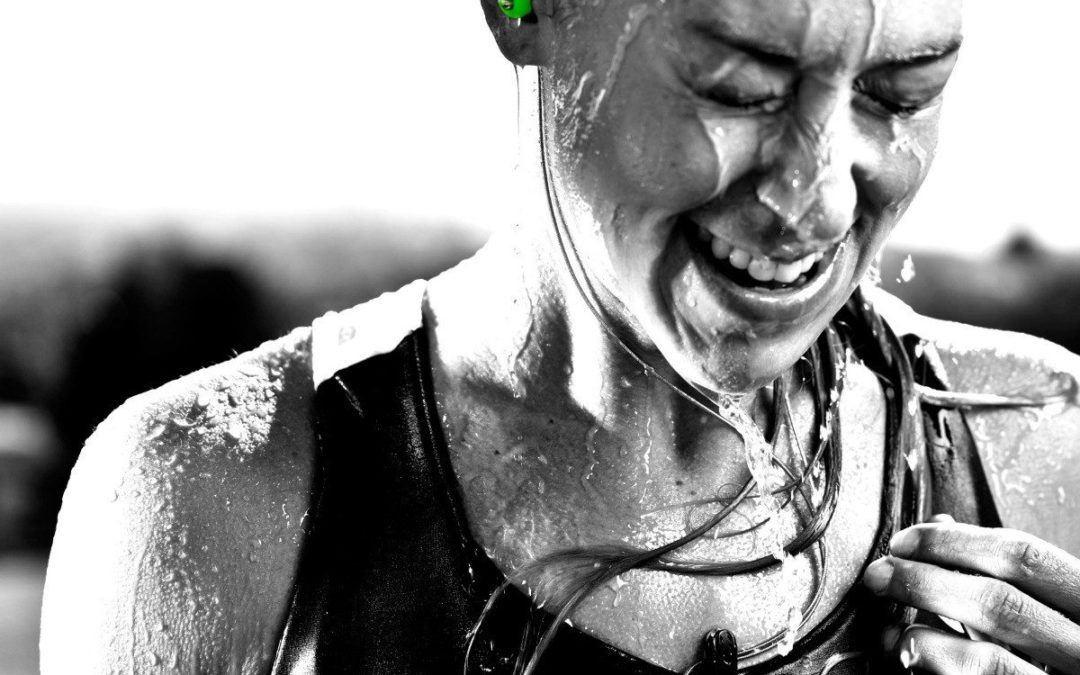Water is essential for human life! We can survive for weeks without food, but just a couple of days without water. This is important to mention as athletes are in greater need of fluid intake while exercising in hot environments or for long periods of time; however, the real question is: how much fluid is “too much”? Can they sweat “too much”? Those questions arise after many athletes develop hyponatremia during competitions.
What is hyponatremia?
Hyponatremia is usually a result of excess water consumption. However, it can also occur due to a reduction in the extracellular fluid volume with a corresponding loss of total body sodium, although, this is uncommon. The normal serum sodium or sodium levels in the blood should be between 135 and 145mmol/L. In cases of hyponatremia, less than 135mmol/L is usually seen, and in severe cases, sodium in the blood can be around 120mmol/L.
The sweat loss that accompanies prolonged exercise leads to a loss of electrolytes and water from the body. Changes in body weight can help us understand how much athletes are sweating; however, the amount of electrolytes lost through sweat is harder to quantify.
Concentration in mmol/L of the major electrolytes present in sweat, plasma and in intracellular (muscle) water in humans
| Plasma | Sweat | Intracellular | |
|---|---|---|---|
| Sodium | 137-144 | 40-80 | 10 |
| Potassium | 3.5-4.9 | 4-8 | 148 |
| Calcium | 4.4-5.2 | 3-4 | 0-2 |
| Magnesium | 1.2-2.1 | 1-4 | 30-40 |
| Chloride | 100-108 | 30-70 | 2 |
Even though sodium is the major electrolyte in sweat, its total composition is highly variable among athletes. Usually, unless the sweat loss of sodium is really high, reposition of electrolytes is not needed. In these cases, carbohydrate replenishment and a proper fluid reposition are enough to maintain performance.
Variables such as intensity of the exercise, climate conditions (training in cold or hot environments) and/or duration of the exercise may influence in the sweat rate and in consequence, the electrolyte losses.
Most athletes participating in endurance events (i.e. marathon races or triathlons) finish the event having lost more fluid than they consumed and are therefore relatively dehydrated. Just the contrary occurs for some others: they drink more than needed and this excessive water intake can dangerously develop hyponatremia.
Symptoms:
Sometimes there is none but in severe conditions, you can see athletes suffering from generalised cramping, nausea, collapse, loss of consciousness and even death.
Risk factors for the development of hyponatremia:
| Athlete-related |
|---|
| Excessive drinking behaviour |
| Weight gain during exercise |
| Low body weight |
| Female sex |
| Slow running or performance pace |
| Event inexperience |
| Non-steroidal anti-inflammatory agents |
| Event-related |
|---|
| High availability of drinking fluids |
| >4 hours exercise duration |
| Unusually hot conditions |
| Female sex |
| Extreme cold temperature |
How can hyponatremia be avoided?
- Slow runners on a cold day will lose little or no sweat, and the primary need would be for carbohydrate intake. Drinking small amounts of concentrated carbohydrate drinks will be an effective strategy.
- Fast runners in the heat may need to drink at a faster rate and are more likely to benefit from more dilute carbohydrate-electrolyte drinks.
- Runners should drink enough to limit weight loss to not more than 2% of body mass and even less than this in hot days.
- It is important to experiment with different drinks and patterns, strategies and timing BEFORE the event.
A sweat patch testing and hydration plan performed by an accredited Sweat Lab Tester may be beneficial during training to perform at your best during competitions, and avoid the risk of suffering hyponatremia. This kind of testing includes not only the amount of electrolytes lost through sweat but also the amount you need to consume during the competition to replenish those losses, the amount of sweat rate per hour of exercise and hydration strategies to avoid dehydration.
Exercising is not just running or eating well, it has a lot of science to consider in order to improve your time trials and health. So, if you want to know more, just leave a message or contact me directly. Athletes are born and made, and I am here to help you enhance the inner athlete in you!
Sources:
- Burke, L and Deakin, V (2010) Clinical Sports Nutrition, Fourth Edition, McGraw-Hill
- The association of UK dietitians, edited by Gandy, J (2014) Manual of Dietetic practice, fifth edition, Wiley Blackwell.
Lilia has a Bachelor degree in Nutrition and Dietetics and a Post Graduate Diploma in Sports Nutrition; passionate about Sports Nutrition, performance enhancement, exercise science and weight management. Lilia always works toward the fulfilment of her client goals, prioritizing their health over nutrition trends.


Recent Comments